Conspicuously low inflation rate for service prices
The consumer inflation rate is steadily rising in the United States and European economies underpinned by the recent economic recovery, and, even in Japan, the consumer inflation rate has been mainly positive. Looking at the April consumer inflation rate (general index), the personal consumption expenditure (PCE) deflator for the United States recorded a relatively high rate of increase of 2.0%, compared to 1.2% in the eurozone. Japan saw a lower level at 0.6% (Figure 1).
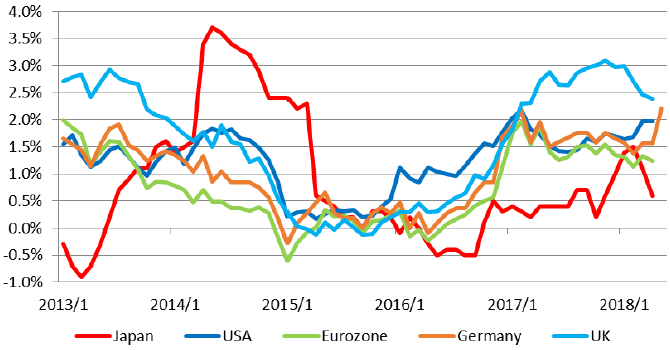
Particularly when the consumer price index is divided into goods and services, Japan's consumer prices of goods are growing relatively higher than the United States and the eurozone against the background of increasing import prices due to a cheaper yen and increased energy and resource prices globally (Figure 2). Other factors include increased prices of agricultural products due to unseasonable weather among other things.
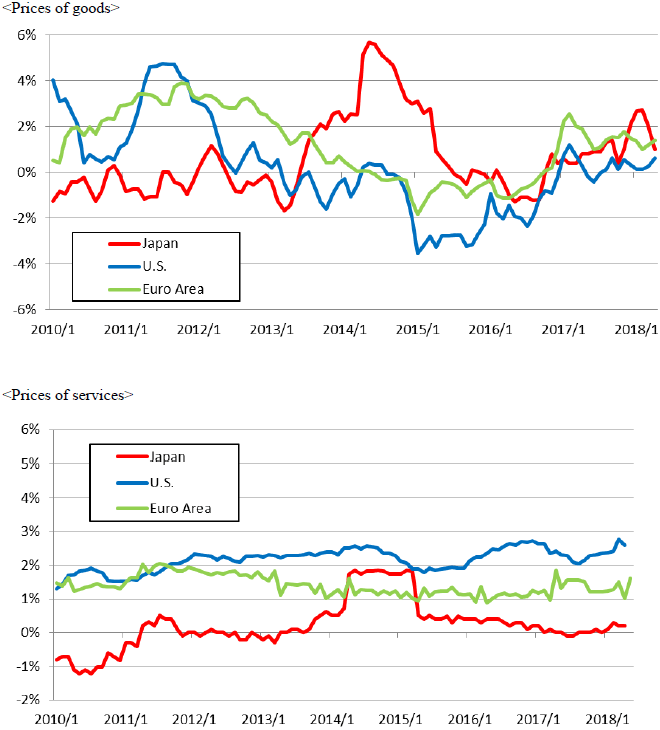
Yet, the issues related to consumer prices in Japan are due to the low rate of service price inflation, which is a major reason why overall consumer prices are not rising much in Japan.
The figures for April 2018 show that the prices of goods rose by 1.0%. Prices of services, on the other hand, rose only by 0.2%, distinctly lower than that in the United States and Europe, and it has been consistently close to zero since the end of 1998, except for the times when the consumption tax rate was raised.
Major factors keeping service prices low are a decline in rents, which account for a large share in service prices, especially imputed rent (owner-occupied homes' rent is calculated and recorded in service prices as if they generate rent), and consumers cutting their spending. For the former, some are skeptical about the way imputed rent is calculated amid increasing market rents, while for the latter, it seems that consumers are trying to cut spending on cultural and recreational activities as their wages are not rising much.
Noteworthy signs of rising service prices
Yet, it is worth noting that there are signs that service prices, which have been consistently slow to rise, have finally been picking up since the beginning of this year, if only slightly. The focus is on the consumption trend as the downward trend in imputed rent has not been changed. Moreover, in relation to supply and demand and consumption trends, economic indicators that tend to lead movements in service prices—namely, the gross domestic product (GDP) gap, consumer behavior index, and consumer projections of prices after one year—are all on an upward trend.
Among these indicators, the GDP gap, an indicator of supply and demand in the economy, has been positive (indicating excess demand) since the second quarter of 2017. Recently, the degree of Japan's excess demand has been one of the highest among the major economies (Figure 3). Naturally, this suggests that there is growing pressure on price increases from the supply and demand side. In addition, the consumer behavior index, which is released by the Cabinet Office as an index of consumer sentiment, has continued to improve for the past three and a half years, suggesting that consumer sentiment is improving (Figure 4). Although this is of course related to the rise and fall of supply as well, improved consumer sentiment will lead to an increase in demand, hence, inflationary pressure.
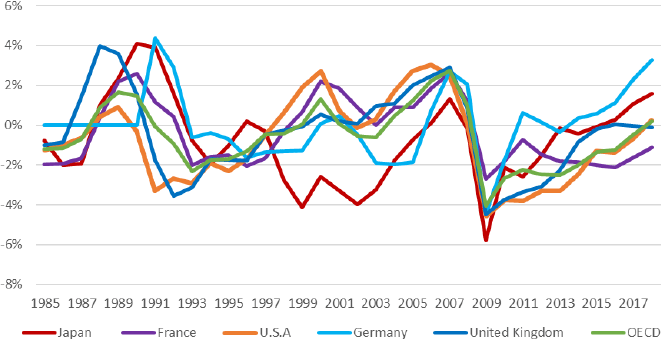
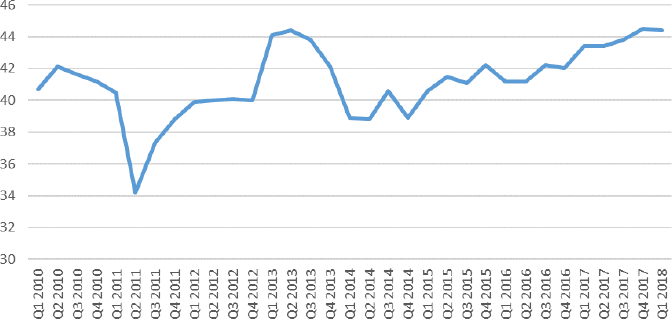
Furthermore, results of a Bank of Japan questionnaire survey ("Opinion Survey on the General Public's Views and Behavior") show that the outlook for consumer prices after one year is for a rising trend since bottoming out in spring 2017. This suggests that consumers have a growing sense that prices are rising at a faster pace over the past year against the backdrop of solid economic recovery and increased labor costs due to the tight labor market (Figure 5).
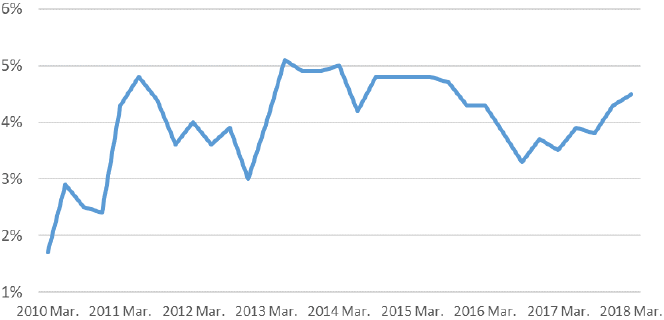
Possibility of gradually breaking free from a deflationary mindset
The fact that all of the leading economic indicators of service prices are on an increasing trend suggests the possibility that service prices are on an upward trend.
On the other hand, the summary of the Inflation Outlook of Enterprises section of the Bank of Japan's Tankan Survey for March 2018 indicates that enterprises (all scales and all industries) on average anticipate consumer prices to rise by 0.8% in one year. This is unchanged from the previous survey (December 2017), indicating that enterprises still have little expectation of inflation.
However, the inflation outlook of enterprises after one year is strongly correlated with the consumer inflation rates in the immediately previous quarter and can be viewed as a lagging indicator in essence, since it is influenced by the most recent consumer inflation rates. Based on this premise, we can say the inflation outlook of enterprises will increase going forward because consumer prices are on an upward trend.
Consumer prices can rise and fall depending on various factors such as weather and labor market conditions. However, it should be noted that there is a possibility of increases in service prices, which are relatively independent from foreign exchange factors and energy price hikes. The price outlook among consumers (demand side) is already edging upward, and if the price outlook among enterprises (supply side) also rises, the deflationary mindset that has long held back the Japanese economy will be lifted.
As a reminder, though, even if we take account of increases in the leading economic indicators of prices, unless there is major movement in imputed rent, increases in service prices will be limited for the time being, and there will be only a small effect on overall consumer prices, and it is unlikely to bring significant changes to monetary policy.
Even so, a change in the deflationary mindset on the part of both consumers and companies would be very significant. This will enable Japan to declare its departure from deflation as a major step toward reinvigorating its economy. Although we need to keep an eye on price trends for some time to come, the Japanese economy is coming closer to departing from its long-term stagnation against the backdrop of improving business conditions and growing labor shortage.


